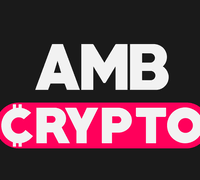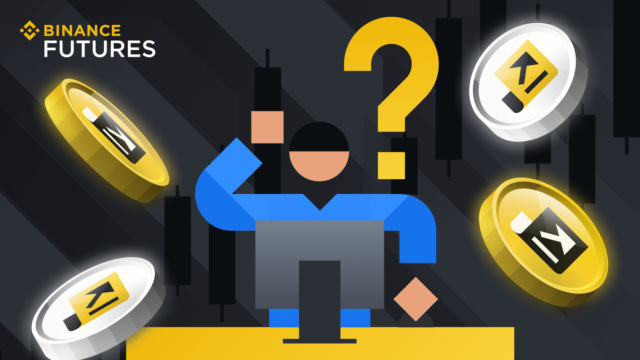
When making investment decisions, it’s important to understand how money is changing and the options to keep your portfolio growing. A well-known trading technique, called futures trading, can be useful as it’s an option capable of keeping an entire portfolio afloat and even outperforming in little time.
From the first recorded futures trade in 1710 to today’s modern environment, which includes stocks and cryptocurrencies, futures trades have soared in popularity. The trading fundamentals behind crypto and traditional futures trades offer very similar attributes to investors. But just as there are fundamental differences between crypto-assets and stocks, there are also differences between traditional and crypto futures trades.
What Are Traditional Futures?
Before you begin, it’s important to know what a futures contract is. Futures contracts are legal agreements between parties to purchase or sell an asset at a later date. In essence, the initial investment is not necessarily purchasing the underlying asset but a contract representation of it. Traditional futures contracts focus on commodities such as crude oil and gold, or financial assets such as bonds and stocks.
The reason people participate in futures contracts is that they offer the ability to add leverage to an investment. Leverage is the use of borrowed funds to multiply the return on an investment. Coupled with potential opportunity is the potential for deep liability, since leverage works in both directions.
Traditional futures trades are most often made by accredited investors who have substantial financial resources. Given the risk involved in futures trading, aspiring traders must be well-capitalized to avoid margin calls. A margin call is when an investor is asked to meet the cost of maintenance margin in a losing position. If you can’t meet the margin, the broker would then initiate a force-close on your losing positions.
What Are Crypto Futures?
Crypto futures apply the same concept as traditional futures, except, in this case, the underlying assets are cryptocurrencies such as Bitcoin or Ethereum. Like traditional futures, crypto futures are contracts that include a predetermined position in a crypto-asset (long or short).
Crypto futures take place online on crypto exchanges. This opens the door for many more investors to participate since they can now access the market from their phones, rather than weaving their finances through various entities.
Another attribute crypto exchanges, such as Binance Futures, offer is the ability to trade quarterly and perpetual contracts. The contracts work just as they sound with quarterly contracts expiring three months after being issued. Meanwhile, perpetual contracts don’t have an expiry date.
Key Similarities
Traditional traders and crypto traders alike enter a futures contract for two reasons: speculation and hedging.
Speculation
No matter what a futures contract is based on, the market is responsive to speculation, or the ascription of a future value to an asset. Strong speculation gives investors a purpose for taking high-risk bets. For example, if you are like Bitcoin maximalist Michael Saylor, you believe that Bitcoin will be the most valuable asset of the 21st century, and therefore its value will continue to increase. You might then enter a futures contract with a long position. If your speculation is correct, your position will pay off significantly as the value of Bitcoin appreciates over time.
Hedging
In contrast to speculation, futures can be used to hedge against the underlying asset. If an investor believed Bitcoin had entered into a bear market, the investor might enter a futures contract to protect their portfolio from falling prices. Though they believe Bitcoin will ultimately grow in the long term, they may bet against it (short) to avoid short-term losses and to even make money while the asset falls.
Hedging works the same way in traditional markets. In fact, portfolios often hold hedge positions to cover for market failures, bubbles, unexpected events, and even large capitulations. The futures contract acts like insurance coverage that maintains the finances of an investor.
When leverage is added to the mix, investors can hedge, say, the full value of their portfolio if they truly believe the markets will fail.
Key Differences
Though traditional and crypto futures trades are used in similar circumstances, their respective market structures vary significantly.
Regulation
A simple way to understand the difference between traditional and crypto markets is traditional markets are regulated, while crypto markets are unregulated. Traditional markets have laws and standards that are designed to ensure the legitimacy of an exchange, protecting against fraudulent behavior, market abuse, and so on. This means every exchange must be approved, slowing trade processes.
Crypto markets, being unregulated, don’t secure regulatory approval for trades. Trading happens faster on a crypto exchange, and new options begin to arise. Unregulated markets allow for perpetual swaps, which are futures contracts without an expiration date. Since crypto exchanges operate around the clock, investors can capitalize on market changes at any time.
Trading Hours
One of the more obvious differences between the two markets is the window of when you’re able to trade futures contracts. Traditional markets such as the stock markets are closed for 13.5 hours each day, making it impossible to trade assets or change positions should major external events occur. With other assets like gold or oil investors still need to work with others to secure their futures contracts.
With crypto-assets, trading is possible at any time of day, any day of the year. Markets never get shut down and are active all around the globe, all the time. This is a massive advantage for traders who are in tune with crypto asset performance and gives insight to when crypto-assets perform better or worse depending on the time of day/year.
Size
As alluded to earlier, a major difference between traditional and crypto futures exchanges is the size of these markets. In terms of value, traditional markets are much larger than crypto exchanges. The top two largest exchanges include CME and ICE, both worth tens to hundreds of billions of dollars. Institutional investors, corporations, and private investors participate in these exchanges daily.
In contrast, crypto futures markets see a relatively smaller institutional participation and are primarily dominated by private investors. However, as cryptocurrencies like Bitcoin and Ethereum enter the mainstream market, more institutional investors are starting to recognize cryptocurrencies as an alternative asset class. Even institutional investors such as BlackRock (which has authorized two of its funds to invest in Bitcoin futures) are beginning to participate in the crypto futures markets.
Conclusion
No matter which market you trade, it’s important to first understand the stand-alone value of whatever you want to invest in, as well as its market cycles. Over-leveraged markets can burn investors and liquidate them quickly. But used wisely, and with a well-planned strategy, any futures trade can reap significant rewards.
Traditional exchanges are protected by gatekeepers, financial requirements, and locality. They are also slower and indirect to the investor. Crypto exchanges only require an internet connection, accept anyone willing to play, and are based on peer-to-peer transactions. There is no intermediary between an investor and the exchange. Crypto markets are known for being more volatile, though, and often have huge amounts of liquidity in them. No matter where you decide to trade, be wise and good luck!

When making investment decisions, it’s important to understand how money is changing and the options to keep your portfolio growing. A well-known trading technique, called futures trading, can be useful as it’s an option capable of keeping an entire portfolio afloat and even outperforming in little time.
From the first recorded futures trade in 1710 to today’s modern environment, which includes stocks and cryptocurrencies, futures trades have soared in popularity. The trading fundamentals behind crypto and traditional futures trades offer very similar attributes to investors. But just as there are fundamental differences between crypto-assets and stocks, there are also differences between traditional and crypto futures trades.
What Are Traditional Futures?
Before you begin, it’s important to know what a futures contract is. Futures contracts are legal agreements between parties to purchase or sell an asset at a later date. In essence, the initial investment is not necessarily purchasing the underlying asset but a contract representation of it. Traditional futures contracts focus on commodities such as crude oil and gold, or financial assets such as bonds and stocks.
The reason people participate in futures contracts is that they offer the ability to add leverage to an investment. Leverage is the use of borrowed funds to multiply the return on an investment. Coupled with potential opportunity is the potential for deep liability, since leverage works in both directions.
Traditional futures trades are most often made by accredited investors who have substantial financial resources. Given the risk involved in futures trading, aspiring traders must be well-capitalized to avoid margin calls. A margin call is when an investor is asked to meet the cost of maintenance margin in a losing position. If you can’t meet the margin, the broker would then initiate a force-close on your losing positions.
What Are Crypto Futures?
Crypto futures apply the same concept as traditional futures, except, in this case, the underlying assets are cryptocurrencies such as Bitcoin or Ethereum. Like traditional futures, crypto futures are contracts that include a predetermined position in a crypto-asset (long or short).
Crypto futures take place online on crypto exchanges. This opens the door for many more investors to participate since they can now access the market from their phones, rather than weaving their finances through various entities.
Another attribute crypto exchanges, such as Binance Futures, offer is the ability to trade quarterly and perpetual contracts. The contracts work just as they sound with quarterly contracts expiring three months after being issued. Meanwhile, perpetual contracts don’t have an expiry date.
Key Similarities
Traditional traders and crypto traders alike enter a futures contract for two reasons: speculation and hedging.
Speculation
No matter what a futures contract is based on, the market is responsive to speculation, or the ascription of a future value to an asset. Strong speculation gives investors a purpose for taking high-risk bets. For example, if you are like Bitcoin maximalist Michael Saylor, you believe that Bitcoin will be the most valuable asset of the 21st century, and therefore its value will continue to increase. You might then enter a futures contract with a long position. If your speculation is correct, your position will pay off significantly as the value of Bitcoin appreciates over time.
Hedging
In contrast to speculation, futures can be used to hedge against the underlying asset. If an investor believed Bitcoin had entered into a bear market, the investor might enter a futures contract to protect their portfolio from falling prices. Though they believe Bitcoin will ultimately grow in the long term, they may bet against it (short) to avoid short-term losses and to even make money while the asset falls.
Hedging works the same way in traditional markets. In fact, portfolios often hold hedge positions to cover for market failures, bubbles, unexpected events, and even large capitulations. The futures contract acts like insurance coverage that maintains the finances of an investor.
When leverage is added to the mix, investors can hedge, say, the full value of their portfolio if they truly believe the markets will fail.
Key Differences
Though traditional and crypto futures trades are used in similar circumstances, their respective market structures vary significantly.
Regulation
A simple way to understand the difference between traditional and crypto markets is traditional markets are regulated, while crypto markets are unregulated. Traditional markets have laws and standards that are designed to ensure the legitimacy of an exchange, protecting against fraudulent behavior, market abuse, and so on. This means every exchange must be approved, slowing trade processes.
Crypto markets, being unregulated, don’t secure regulatory approval for trades. Trading happens faster on a crypto exchange, and new options begin to arise. Unregulated markets allow for perpetual swaps, which are futures contracts without an expiration date. Since crypto exchanges operate around the clock, investors can capitalize on market changes at any time.
Trading Hours
One of the more obvious differences between the two markets is the window of when you’re able to trade futures contracts. Traditional markets such as the stock markets are closed for 13.5 hours each day, making it impossible to trade assets or change positions should major external events occur. With other assets like gold or oil investors still need to work with others to secure their futures contracts.
With crypto-assets, trading is possible at any time of day, any day of the year. Markets never get shut down and are active all around the globe, all the time. This is a massive advantage for traders who are in tune with crypto asset performance and gives insight to when crypto-assets perform better or worse depending on the time of day/year.
Size
As alluded to earlier, a major difference between traditional and crypto futures exchanges is the size of these markets. In terms of value, traditional markets are much larger than crypto exchanges. The top two largest exchanges include CME and ICE, both worth tens to hundreds of billions of dollars. Institutional investors, corporations, and private investors participate in these exchanges daily.
In contrast, crypto futures markets see a relatively smaller institutional participation and are primarily dominated by private investors. However, as cryptocurrencies like Bitcoin and Ethereum enter the mainstream market, more institutional investors are starting to recognize cryptocurrencies as an alternative asset class. Even institutional investors such as BlackRock (which has authorized two of its funds to invest in Bitcoin futures) are beginning to participate in the crypto futures markets.
Conclusion
No matter which market you trade, it’s important to first understand the stand-alone value of whatever you want to invest in, as well as its market cycles. Over-leveraged markets can burn investors and liquidate them quickly. But used wisely, and with a well-planned strategy, any futures trade can reap significant rewards.
Traditional exchanges are protected by gatekeepers, financial requirements, and locality. They are also slower and indirect to the investor. Crypto exchanges only require an internet connection, accept anyone willing to play, and are based on peer-to-peer transactions. There is no intermediary between an investor and the exchange. Crypto markets are known for being more volatile, though, and often have huge amounts of liquidity in them. No matter where you decide to trade, be wise and good luck!
.
元ソース 詳細はこちら
Traditional Futures vs. Crypto Futures – What Are The Similarities and Differences?
バイナンス公式
バイナンス登録
















